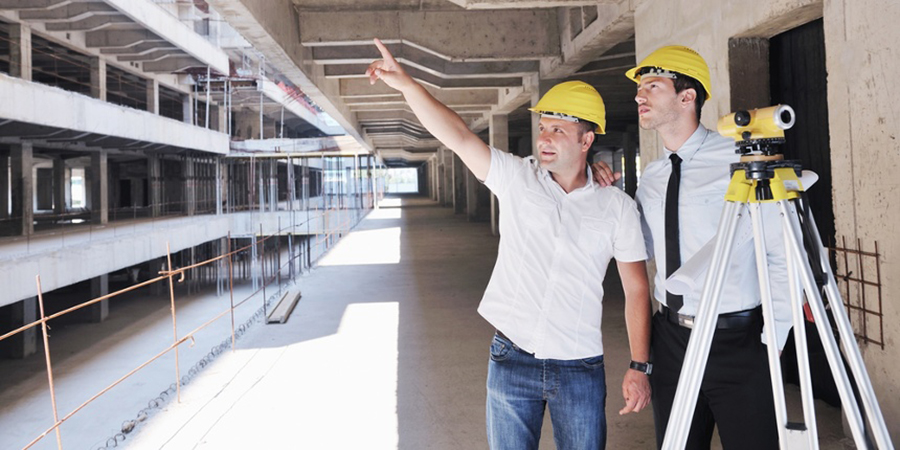
The construction of new homes, multi-family communities and businesses has had a resurgence in recent years, bringing with it many rewards as well as challenges including a skilled labor shortage, increased regulatory measures, new safety rules, higher material costs and more.
Many market analysts suggest that new construction starts will remain relatively steady overall, meaning construction companies will need to keep pace with emerging trends to remain competitive. In that light, let’s look at five major trends shaping the future of construction.
1. Rising Material Costs
Not surprisingly, like most consumer goods, construction material costs are expected to continue rising. The effects of tariffs on certain products are having an impact and some suppliers have indicated future price increases as a result.
In a survey of contractors, concern increased from 38% to 44% over material costs and the negative impact potential increases would have on their businesses. Those in the industry will need to strategize ways to mitigate rising material costs in construction by reducing waste and streamlining processes. Some are leveraging technology solutions and adopting lean principles that are applied in other industries like manufacturing.
2. Increase in Prefabrication and Modular Construction
One way to improve efficiencies and reduce overall material costs is by using prefabricated products, which is only expected to rise in coming years, despite some of its limitations. The use of prefab homes can’t accommodate highly customized designs, and some municipalities even restrict the building of modular homes. Many in the construction industry have shied away from modular components because of stigmas that depicted prefab construction as cheap, lower-quality structures.
Today, however, modular construction quality has improved significantly and can often compete head-to-head with stick-built structures. They’re engineered to be energy efficient and offer much more customization than in the past. The speed of constructing a modular structure is also typically much faster, allowing for more projects to be completed in less time with lower overall labor and material costs.
3. Increased Emphasis on Sustainability
Initiatives to improve sustainability on the construction site have been steadily growing and will have an even greater emphasis moving forward. Having a “green” project starts with considering a building’s environmental footprint while still in the design phase and is carried through to completion. Businesses and homeowners alike are demanding higher energy efficiency, fewer toxic materials, reduced water usage and the incorporation of natural light.
Sourcing of building materials is a major factor, and an increase in more low-impact products such as recycled, up-cycled and re-purposed resources can be expected. Construction equipment itself is becoming more sustainable as well, with efforts being made to move toward reduced emissions and a zero-carbon footprint. Initiatives to minimize construction waste may have the greatest impact, however. The Environmental Protection Agency (EPA) estimates that construction and demolition waste, including drywall, concrete, metal, roofing materials, scrap wood and more, generates 548 million tons of debris annually.
4. An Emphasis on Younger Workers
Dominating recent headlines is the skilled labor shortage, and the construction industry is being hit harder than most, with urban centers being affected more than rural areas. A surge in recruiting efforts will need to take priority as older skilled tradesmen and women leave the industry and fewer younger workers line up to take their places.
To compete, construction companies will need to find ways to offer creative benefits and look for more opportunities to hire subcontractors. More emphasis will need to be placed on continuing education for existing employees in addition to networking, community outreach, on-the-job training and apprenticeships. Efforts will also need to be made to shed new light on the construction industry and how it has evolved over time to include improved safety initiatives and the adoption of technology if it wants to compete for jobs and attract younger employees.
5. Technology Helps Fill the Skilled Labor Gap and Improve Safety
Construction technology investments grew 30% in 2018, and new tech will continue to emerge to address inefficiencies and a smaller pool of workers. Mobile apps, collaboration software and cloud capabilities will make major strides in the year ahead.
Many organizations already use drones to inspect buildings from a birds-eye view, have 3D animation capabilities and leverage GPS systems to assist their operations. In addition to conducting effective safety walkarounds, wearable technology is making strides in improving safety, alerting workers on the job site about potential hazards in real time and even sending notifications if someone trips or falls. These technologies can help reduce injuries and lower workers’ compensation premiums. The use of data and the insights it provides is a key factor in achieving success moving forward, and construction companies will need to use analytics and tools to improve communication between the job site, engineers, designers and customers.
As the construction industry continues to advance in order to minimize risks, other risks can pop up. Protecting your business from cyber attacks and keeping up with emerging trends can bring added costs and complications. Construction companies also will need to consider if they still have adequate insurance coverage for all that technology and remain in compliance with their state’s work comp laws.
To help you address the skilled labor shortage, we’ve developed a Construction Hiring Guide, which you can access by simply clicking the link below. If you are still looking for more information on navigating the changing landscape of the construction industry, reach out to our team for a complimentary review of your safety protocols, work comp classifications, and to make sure you’re properly protected from liability claims, cyber crime and other potential losses.
Lorem ipsum dolor sit amet, consectetur adipiscing elit

150 Main Street, Suite 300
Menasha, WI 54952
Call us: 800-236-1034
No Comments Yet
Let us know what you think